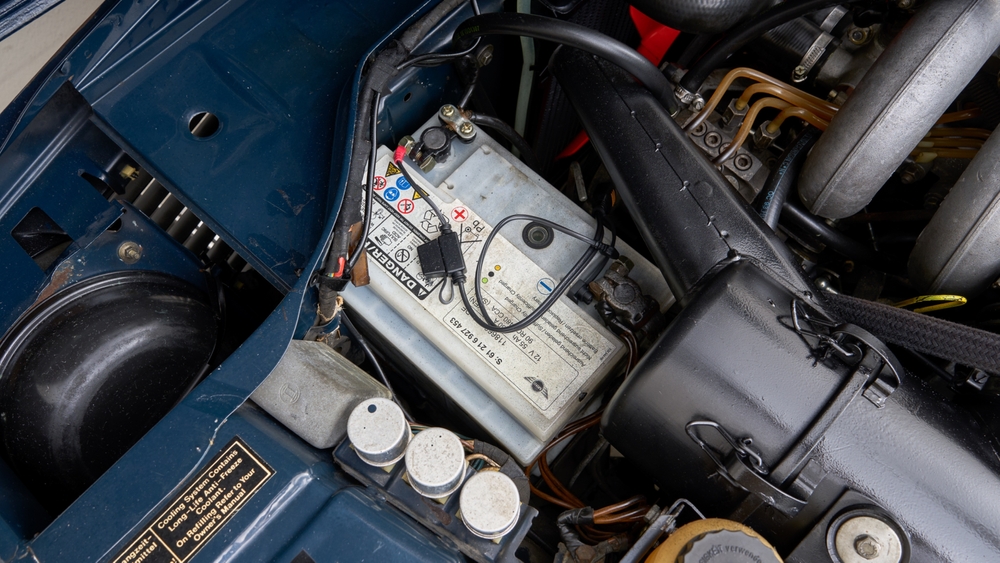
How Do I Find the Correct Battery for a European Vehicle?
August 1, 2024 9:16 pm Leave your thoughtsFinding the correct battery for a European vehicle can be a daunting task due to the specific requirements and standards these vehicles adhere to. Unlike their American or Asian counterparts, European auto batteries have unique specifications that must be considered to ensure optimal performance and longevity. This comprehensive guide will walk you through everything you need to know to find and select the right battery for your European car.
European Auto Batteries
European vehicles, including brands like BMW, Audi, Mercedes-Benz, and Volkswagen, often require batteries that meet rigorous standards. Understanding these requirements is crucial for ensuring that your vehicle operates reliably.
Battery Specifications
European auto batteries are designed to meet the standards set by various European regulations and directives. Key specifications to consider include:
- Cold Cranking Amps (CCA): This is a measure of the battery’s ability to start your vehicle in cold conditions. European vehicles often require higher CCA ratings due to the cold climates and more demanding engine designs. Check the recommended CCA rating in your vehicle’s manual.
- Battery Size and Type: European vehicles may use different battery sizes and types compared to American or Asian cars. The battery must fit correctly in the battery compartment and have the appropriate capacity and type for your specific model.
- Voltage: Most European vehicles use a 12-volt battery, which is a standard across many types of vehicles. However, always confirm the voltage requirement in your vehicle’s manual to avoid any compatibility issues.
Quality Standards
European auto batteries must adhere to high-quality standards to ensure reliable performance. These standards include:
- International Electrotechnical Commission (IEC) Standards: Batteries must meet IEC standards, which ensure the battery performs well under various conditions and has a reliable lifespan.
- Association of European Vehicle Manufacturers (ACEA) Standards: ACEA standards ensure that the battery provides the necessary power and durability for European vehicles.
How to Find the Correct Battery
Finding the correct battery involves several steps, including consulting your vehicle’s manual, understanding the specifications, and choosing between OEM and aftermarket options.
1. Check Your Vehicle’s Owner’s Manual
Your first step should be to consult your vehicle’s owner’s manual. The manual provides specific information about the battery type, size, and specifications required for your vehicle. Look for sections related to battery maintenance or replacement for detailed information.
2. Identify the Battery Specifications
After obtaining information from the owner’s manual, you’ll need to identify the battery specifications. Key factors to consider include:
- Cold Cranking Amps (CCA): Ensure that the battery meets or exceeds the recommended CCA rating to handle cold starts and maintain engine performance.
- Battery Dimensions: Verify that the battery size matches the dimensions of the battery compartment in your vehicle. A battery that is too large or too small can cause fitment issues and impact performance.
- Terminal Configuration: Check that the battery terminals are positioned correctly and match the configuration required by your vehicle. Incorrect terminal placement can lead to poor connections and starting issues.
3. Consider OEM vs. Aftermarket Batteries
When selecting a battery, you have the option to choose between OEM (Original Equipment Manufacturer) and aftermarket batteries:
- OEM Batteries: These batteries are designed specifically for your vehicle make and model, ensuring a perfect fit and optimal performance. They are generally more expensive but offer reliability and compatibility.
- Aftermarket Batteries: Aftermarket batteries can be more affordable but may require additional effort to ensure they are compatible with your vehicle. They come in various brands and specifications, so it’s crucial to check compatibility carefully.
4. Check the Battery’s Warranty
A good warranty can provide peace of mind and protection against defects or performance issues. Most European auto batteries come with a warranty that covers specific terms and conditions. Be sure to review the warranty details to understand what is covered and the duration of the warranty.
5. Use a Battery Finder Tool
Many automotive parts stores and battery retailers offer online battery finder tools. These tools allow you to input your vehicle’s make, model, and year to find compatible battery options. Using a battery finder tool can simplify the process and help you identify the correct battery quickly.
How to Convert a Battery
In some cases, you might need to convert a battery from a different specification to fit your European vehicle. This process involves careful consideration to ensure compatibility and performance.
1. Determine Compatibility
Before proceeding with a battery conversion, determine if the battery you plan to use is compatible with your vehicle. Check the size, voltage, and terminal configuration to ensure the battery will work properly.
2. Use an Adapter if Necessary
If the battery terminals are not in the correct configuration, you might need an adapter to make a proper connection. Ensure that the adapter is designed for automotive use and is compatible with your vehicle’s electrical system.
3. Ensure Proper Fit
Confirm that the converted battery fits securely in the battery compartment. An improperly fitting battery can cause issues with performance and safety. Ensure that the battery is held securely and does not move around in the compartment.
4. Check Battery Performance
After converting the battery, monitor its performance to ensure it meets your vehicle’s requirements. Pay attention to starting performance, electrical system functionality, and any signs of issues such as dim lights or slow starts.
5. Consult a Professional
If you are unsure about converting a battery or need assistance, consult a professional mechanic or automotive technician. They can provide guidance and ensure that the conversion is done correctly and safely.
Additional Tips for Maintaining Your Battery
Proper maintenance can extend the life of your battery and ensure reliable performance. Here are some additional tips:
- Regular Inspections: Check your battery regularly for signs of wear or damage, such as corrosion around the terminals or leaks. Address any issues promptly to prevent further damage.
- Keep the Battery Clean: Clean the battery terminals and ensure they are free from corrosion. Use a battery terminal cleaner or a mixture of baking soda and water to remove any buildup.
- Check Battery Charge: Ensure that the battery is holding a proper charge. If you notice issues with starting the vehicle or if the battery frequently needs recharging, it may be time for a replacement.
- Avoid Extreme Temperatures: Extreme temperatures can impact battery performance. Try to park your vehicle in a shaded area during hot weather and in a garage or sheltered location during cold weather to protect the battery.
- Replace When Necessary: Batteries typically have a lifespan of 3-5 years. If your battery is approaching the end of its lifespan or showing signs of failure, consider replacing it with a new one to avoid potential issues.
Conclusion
Finding the correct battery for a European vehicle involves understanding the specific requirements and specifications unique to these vehicles. By consulting your vehicle’s owner’s manual, identifying the correct battery specifications, and considering options for OEM and aftermarket batteries, you can ensure that you select the right battery for your car.
If you need to convert a battery or face challenges in finding the right fit, take the necessary precautions and consult professionals if needed. Proper battery maintenance and timely replacement can also contribute to the longevity and reliability of your vehicle.
For more information and assistance, consider reaching out to automotive experts or using online tools provided by battery retailers. By following these guidelines, you can ensure that your European vehicle remains in top condition and performs reliably on the road.
Need a Battery Store in Houston, TX?
At Texford Battery Co, we pride ourselves on being much more than just another battery specialist. We credit our seven decades of business growth and success to the unmatched service and expertise our team provides. Texford Battery Co is not simply a supplier – we helped pave the way for many innovations in the battery distribution industry that continue to keep prices competitive for our customers. Among them, we were a leader in the creation of the Battery Marketing Group in the 1970s. As a founding member of this national network of battery distributors and manufacturers, we are able to offer up to 10,000 of the industry’s top products to our customers at the lowest cost. Call us today!
Categorised in: Car Batteries
This post was written by admin
